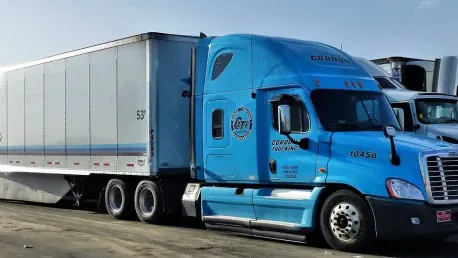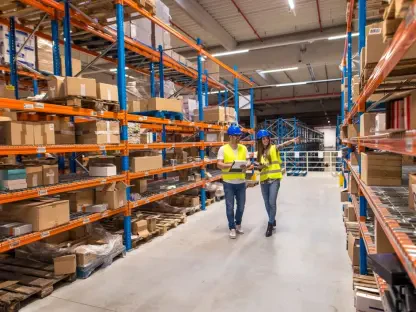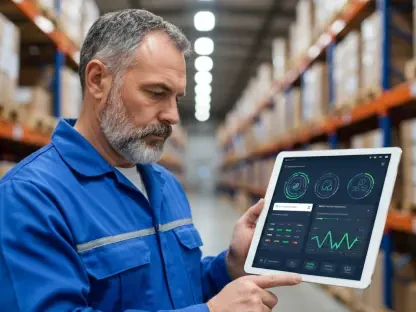The logistics industry plays a crucial role in the global economy, facilitating the movement of goods and services across vast distances. However, this sector is also a significant contributor to carbon emissions, presenting a challenge as the world strives for more sustainable practices. Fleet decarbonization is essential in reducing the carbon footprint of logistics operations. This task is intricate yet necessary to ensure future sustainability and efficiency. Here’s a detailed and structured guide on how logistics managers can navigate this complex process.
Recognize the Significance of Decarbonization
The journey towards fleet decarbonization begins with a profound understanding of its importance. Recognizing that the logistics sector is responsible for a substantial chunk of global greenhouse gas emissions, mainly attributable to heavy dependence on fossil fuels, is essential. Moving toward decarbonization can significantly help combat climate change, enhance the company’s reputation, comply with tightening regulatory requirements, and lead to long-term cost savings. This holistic understanding paves the way for a committed approach toward sustainable practices in logistics.
Awareness of the environmental impact of logistics operations is the first step in driving change. The ripple effects of fleet decarbonization extend beyond mere compliance; they encompass opportunities for innovation and leadership in sustainability. Companies like Transiberica are already setting precedents in this regard. By shifting towards more eco-friendly practices, logistics managers not only contribute to the environment but also secure a competitive edge in a market that increasingly values sustainability.
Evaluate the Existing Fleet
A thorough evaluation of the existing fleet is a critical step in the decarbonization process. Logistics managers must assess factors such as the age, fuel type, and efficiency of each vehicle. This detailed analysis includes scrutinizing fuel consumption patterns, maintenance records, and emission levels. Such an audit helps in pinpointing the vehicles that are the most significant contributors to carbon emissions and identifying those that are prime candidates for either replacement or retrofitting.
This assessment is not a one-time task but an ongoing process that needs to be periodically revisited. By maintaining up-to-date records of fleet performance, managers can make informed decisions about which vehicles need immediate attention and which can still operate efficiently for a longer period. This step is foundational in crafting a realistic and effective decarbonization strategy, allowing for targeted interventions rather than a blanket approach.
Define Specific and Obtainable Objectives
Setting clear and achievable goals is pivotal to the success of fleet decarbonization efforts. These objectives should align with the company’s broader sustainability strategy and include specific targets for emission reductions, timelines for transitioning to alternative fuels, and milestones for integrating new technologies. Such well-defined goals provide a roadmap that can be followed and adjusted as necessary.
Creating specific, measurable, achievable, relevant, and time-bound (SMART) goals ensures that everyone within the organization understands the targets and their role in achieving them. A clear plan helps in setting expectations and allocating resources effectively. It’s also essential to establish metrics for tracking progress, enabling the team to celebrate milestones and recalibrate strategies when needed.
Investigate Alternative Fuels and Innovations
Exploring alternative fuels and emerging technologies is one of the most effective strategies for fleet decarbonization. Options such as electric vehicles (EVs), hydrogen fuel cells, and biofuels present viable alternatives to conventional fossil fuels. Logistics managers should stay updated on advancements in these areas and consider pilot projects to test their feasibility within their operations. Hybrid vehicles can serve as an interim solution, blending traditional and alternative fuels to reduce emissions.
Keeping abreast of technological advancements ensures that logistics companies remain competitive and compliant with future regulations. Pilot projects and partnerships with technology providers can offer valuable insights into the practical challenges and benefits of new technologies. By gradually integrating these alternatives, logistics managers can minimize disruption and optimize the transition to a more sustainable fleet.
Allocate Funds for Fleet Management Software
Investing in advanced fleet management software can be a game-changer in the decarbonization process. These systems offer real-time data on vehicle performance, fuel consumption, and emissions. Additionally, they feature route optimization tools, which can significantly reduce fuel usage and emissions by identifying the most efficient paths. Predictive maintenance capabilities ensure that vehicles operate at peak efficiency, further minimizing emissions.
The initial investment in such software can lead to substantial long-term savings and efficiency gains. By providing a granular view of fleet operations, this technology empowers managers to make data-driven decisions. The ability to monitor performance in real-time enables proactive measures, enhancing the overall sustainability and effectiveness of the logistics operations.
Introduce Driver Training Initiatives
The behavior of drivers plays a significant role in fuel consumption and emission levels. Implementing driver training programs focused on eco-driving techniques can lead to substantial improvements. These programs can teach drivers how to optimize fuel use through methods such as smooth acceleration and braking, maintaining steady speeds, and reducing idling time. Regular feedback and incentives for improved driving behavior can reinforce these practices, leading to long-term changes.
Driver training initiatives should be an ongoing element of the company’s operations, not one-off events. Continuous education and regular updates on best practices help keep drivers informed and engaged. By fostering a culture of eco-conscious driving, logistics managers can achieve noticeable reductions in fuel consumption and emissions, contributing materially to the decarbonization goals.
Involve Stakeholders and Promote Teamwork
Engaging stakeholders and promoting collaboration is crucial for the success of fleet decarbonization. This effort includes employees, suppliers, and customers. Communication regarding the importance of decarbonization and its contribution to the company’s sustainability goals can garner widespread support. Collaborating with suppliers can lead to innovations in vehicle technology and fuel options, while engaging customers can create a demand for more sustainable logistics solutions.
The involvement of all stakeholders ensures a cohesive approach to decarbonization. Supplier partnerships can open up new possibilities for sourcing eco-friendly vehicles and fuels, while customer demand can drive the adoption of sustainable practices. Transparent communication about the progress and benefits of decarbonization fosters an inclusive culture that can propel the initiative forward.
Track Progress and Revise Strategies
The logistics industry is vital to the global economy, enabling the transportation of goods and services across vast distances. Despite its importance, this sector significantly contributes to carbon emissions, posing a challenge as the world moves toward more sustainable practices. Reducing the carbon footprint of logistics operations through fleet decarbonization is essential for ensuring both future sustainability and efficiency. This task, although complex, is necessary and can be managed with a structured approach.
Fleet decarbonization involves transitioning to low-emission vehicles, adopting alternative fuels, and incorporating electric trucks into the logistics network. Additionally, improving route planning and enhancing operational efficiencies can further reduce emissions. Logistics managers must stay informed about emerging technologies and government regulations that encourage greener practices. Financial incentives and partnerships with technology providers can also support this eco-friendly transition.
Investing in driver training programs to emphasize fuel-efficient driving habits is another critical aspect. Regular maintenance and upgrades to existing fleets contribute significantly toward reducing emissions. Managers may also consider implementing data analytics to monitor and optimize fleet performance continually. By adopting these strategies, logistics operations can significantly cut their carbon output, aligning with global sustainability goals and maintaining operational efficiency.









